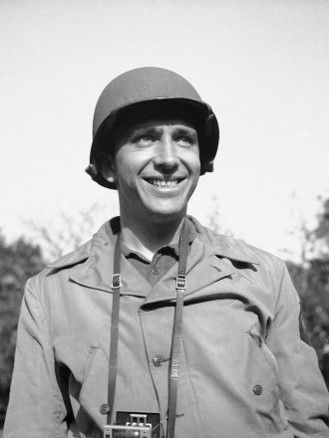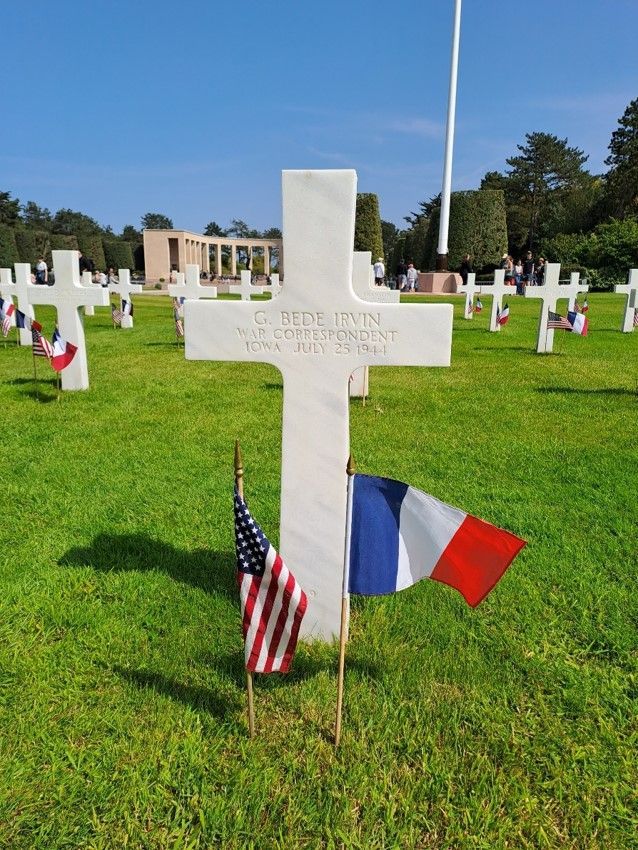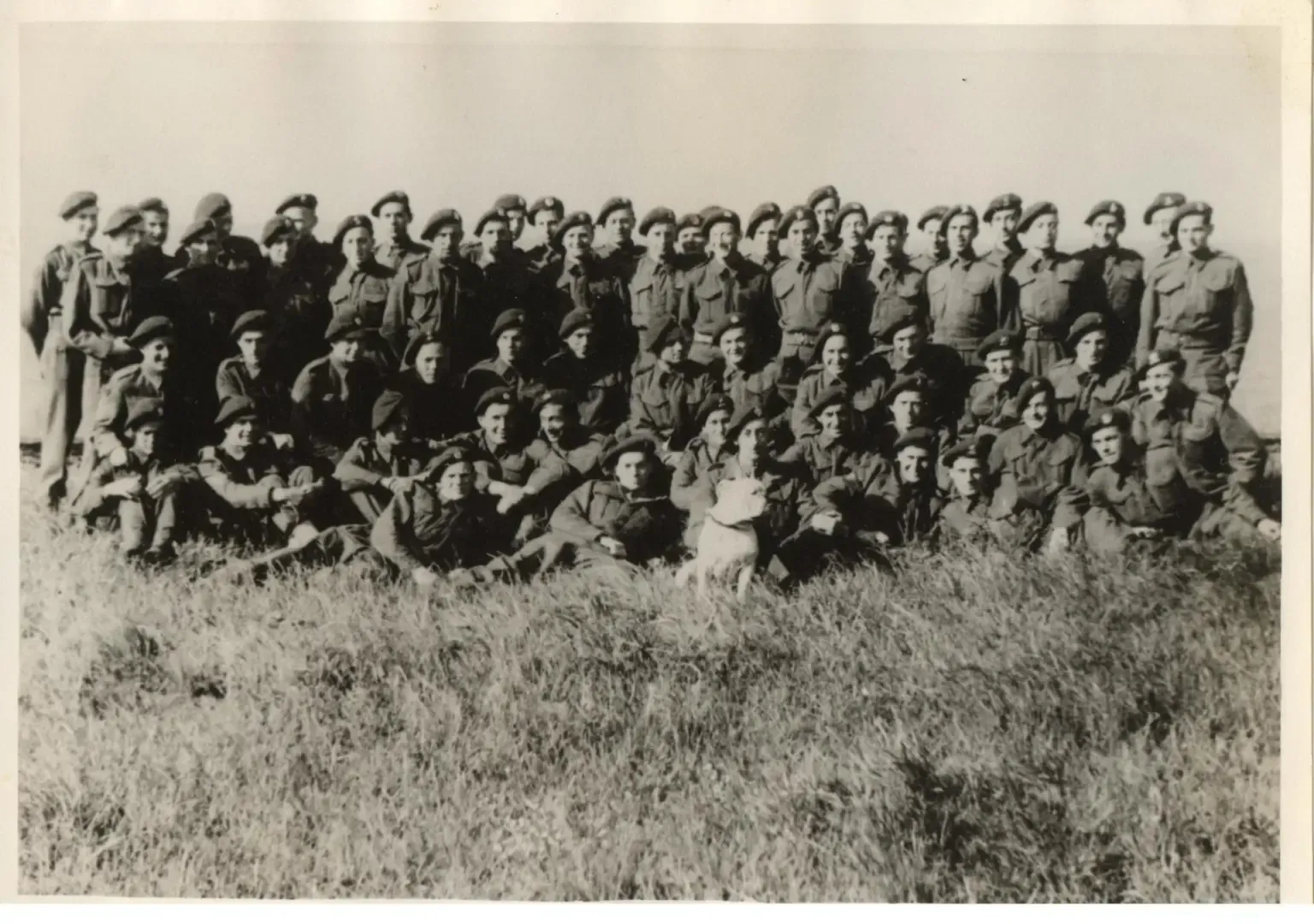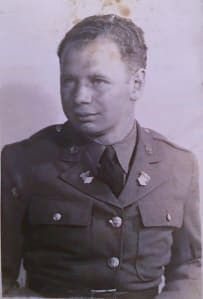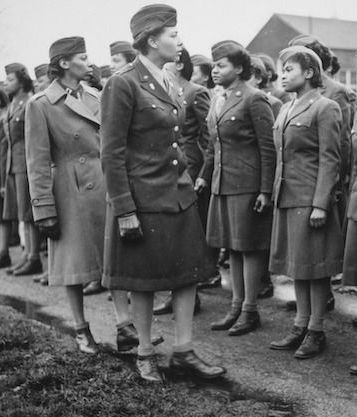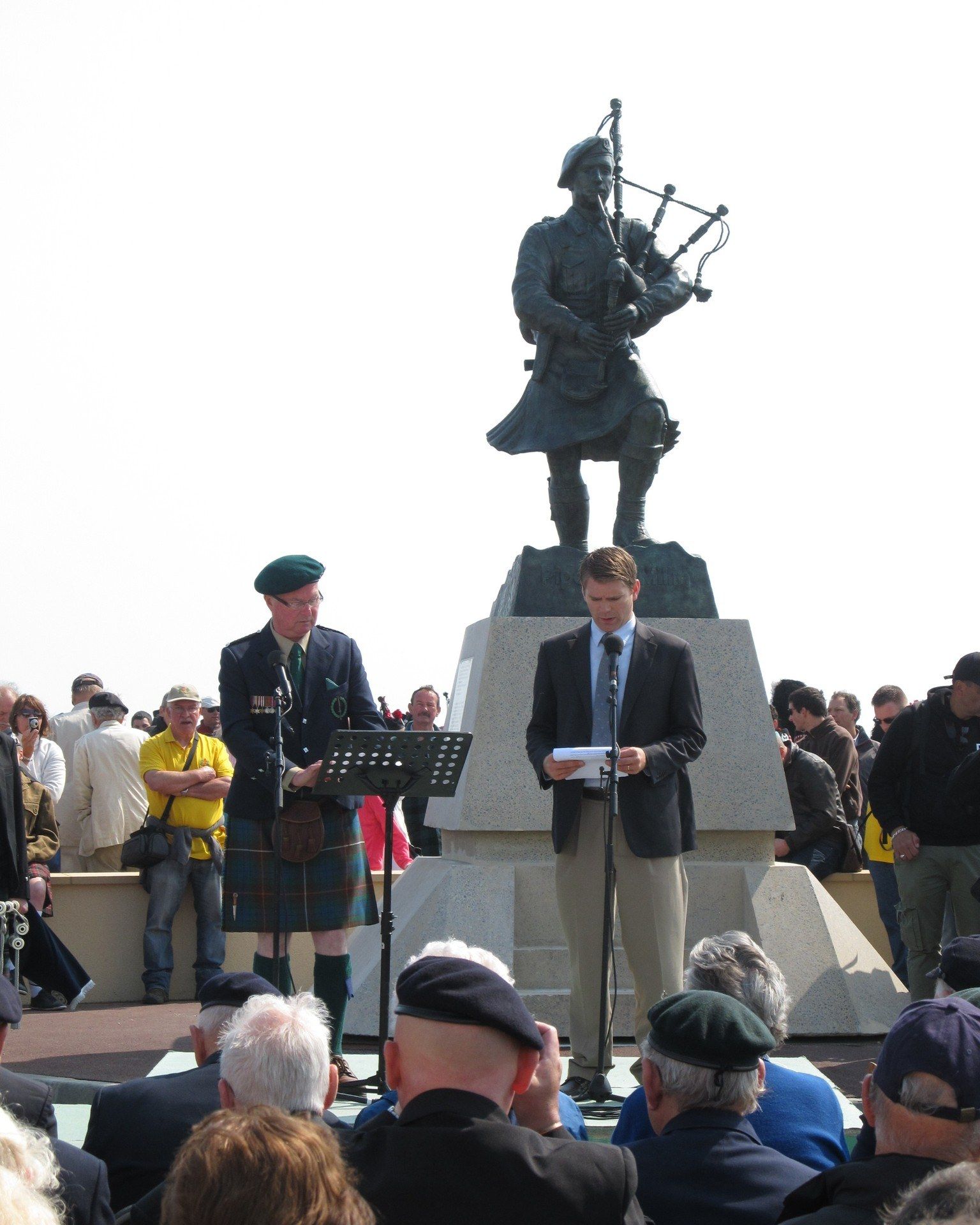Life and death of Associated Press war correspondent George Bede Irvin
Alexander Braun • February 10, 2025
When several Associated Press correspondents arrived in southern England to cover the Allies’ imminent D-Day invasion of Normandy, a U.S. commander offered them a no-nonsense welcome.
“We’ll do everything we can to help you get your stories and to take care of you. If you’re wounded, we’ll put you in a hospital. If you’re killed, we’ll bury you. So don’t worry about anything,” said Major General Clarence R. Huebner of the U.S. Army 1st Infantry Division slated to land on Omaha Beach on D-Day.
On Monday, June 3, 2024, colleagues from AP’s Paris bureau, covering the 80th anniversary of the landings, laid flowers at the foot of the white stone cross on the grave of George Bede Irvin.
George Bede Irvin, born on July 27, 1910, in Des Moines, Iowa, was an American journalist and photographer who later became a war correspondent for the Associated Press (AP) during World War II. Before his wartime service, Irvin worked for "La Tribune" and later joined the Associated Press (AP), covering various assignments. He was known for his enthusiasm and dedication to journalism.
Irvin was married twice during his lifetime. His first marriage was to Marjorie Scholl, who served as the society editor of The Des Moines Register. The couple married in the early 1930s but divorced in 1934 after more than two years of marriage.
On January 11, 1936, Irvin married his second wife, Kathryn N. Hankin, in Newton, Jasper County, Iowa. Kathryn was an actress born on October 7, 1912, in Seattle, Washington. She appeared in films such as "College Rhythm" (1934) and "Bottoms Up" (1934). The couple remained married until Bede's death on July 25, 1944.
Irvin was sent to Europe in April 1944 to cover the Allied preparations for the opening of the Western Front during World War II. He was the first American photographer assigned to the European theater by the Associated Press in anticipation of the Allied invasion.
Irvin extensively covered the activities of the U.S. Army Air Forces (USAAF) in the European theater. His assignments included documenting various aspects of the USAAF's operations, providing firsthand accounts and visual documentation of the air war over Europe. Irvin's work often involved accompanying bomber crews on their missions, to capture firsthand accounts and photographs that showed the intensity and dangers of aerial combat. His commitment to frontline reporting provided the public with a vivid portrayal of the air war, highlighting the bravery and challenges faced by USAAF personnel during the conflict.
On July 25, 1944, near the town of Saint-Lô in Normandy, Irvin was documenting an Allied bombardment intended to break through German lines, codenamed Operation Cobra. Irvin had already shot photos of the bombardment and was having lunch in his Jeep near Pont-Hébert, four miles from Saint-Lô, when the bombing barrage suddenly started drifting back.
“Someone shouted, ‘Watch out, bombs from the Marauders are falling short,’ and everyone started running," a fellow war correspondent later said. “Irvin had been sitting in a Jeep, and apparently he hesitated a split second to pick up his camera before diving for a nearby ditch. He was caught in mid-air by a bomb fragment and killed instantly.”
Irvin was found crumpled in a ditch with one camera around his neck and the other lying near an outstretched hand.
This incident also claimed the lives of over 100 American soldiers and wounded nearly 500 others.
The miscommunication that led to the bombing of Allied positions at the start of Operation Cobra was primarily due to errors in coordination between ground forces and the U.S. Army Air Forces.
1. Shifting Bombing Lines
o The initial bombing line (the designated boundary where bombs should be dropped) was set relatively close to Allied frontlines.
o However, after concerns about the proximity, General Omar Bradley requested the bomb line be moved further south to avoid friendly fire.
o Despite this request, some bomber groups did not receive or properly adjust to the change, leading them to target areas too close to American troops.
2. Bomber Approach Direction
o The original plan was for bombers to attack parallel to the frontline (east to west) to minimize the risk of friendly fire.
o However, due to logistical constraints and operational preferences, the bombers approached perpendicular to the frontline (north to south).
o This increased the chances of bombs falling short into Allied positions, which is exactly what happened.
3. Delayed or Misinterpreted Signals
o Some aircraft formations misunderstood ground signals meant to guide them, leading to confusion over where they should release their payload.
o Smoke markers, meant to designate enemy positions, may have been misinterpreted due to shifting battlefield conditions.
4. Weather and Visibility Issues
o Dust, smoke, and poor visibility contributed to navigational errors.
o Some bombers misidentified targets and released bombs too early, hitting friendly troops.
This incident also claimed the lives of over 100 American soldiers and wounded nearly 500 others. The tragic event led to changes in tactical bombing coordination to prevent similar mistakes in future operations. Despite this disaster, Operation Cobra ultimately succeeded, allowing Allied forces to break through German defenses and liberate large parts of France.
Irvin had been assigned to the U.S. Ninth Air Force at the time of his death, and the unit’s commander, Major General Lewis H. Brereton, issued a statement on July 26 acknowledging that the photographer had been “killed by the explosion of a bomb from one of our own bombardment aircraft” before going on to praise Irvin:
“He was an unarmed observer who, heedless of personal danger, flew with us, lived with us and worked with us that through the medium of his profession he might bring home to all of us the truths of war.
“During the period of his assignment with the Ninth Air Force, I came to know Mr. Irvin well. He flew frequently as a photographic observer with our medium bombers and performed exceptionally meritorious service in the pictorial coverage of personnel and activities of the entire air force.
“I feel a deep sense of personal loss at his passing, which should be regarded by one and all as the loss of a highly trained professional soldier who died in the service of his country.”
On July 28, Irvin was buried at the temporary U.S. military cemetery at La Cambe, west of Omaha Beach, with numerous correspondents and photographers in attendance. Among them was Gordon Gammack of his hometown Des Moines Register, who wrote: “The service was simple and much as I think Bede would have wanted. During it the fighter-bombers he had photographed so many times roared overhead on their way to smash German positions.”
Irvin's commitment to frontline reporting exemplified the courage of war correspondents who risked their lives to deliver firsthand accounts of the conflict. He was the 18th U.S. newsman to be killed during World War II.
George Bede Irvin was later moved to the Normandy American Cemetery, Colleville-sur-Mer, where he was buried in Plot A, Row 12, Grave 9.


